Abstract
The initial respiratory rates at 20 centrigrade of detached oranges (Valencia and navel), grapefruit, and lemons decreased during ontogeny. Small attached oranges respired at the same rate as detached fruits of the same weight, and cutting the pedicel produced no shock or injury stimulus to the respiratory rate. Small oranges and grapefruit (average weight about 15 grams) showed pseudoclimacteric respiratory patterns and produced ethylene. The height of the respiratory rise and the amount of ethylene produced decreased as the fruit increased in weight until the September 4th harvest, when the fruit weights were 120, 64, and 87 grams for grapefruit, Valencia, and navel oranges, respectively; at that time no respiratory rise or ethylene production was observed. The pattern for all subsequent harvest revealed no postharvest rise in the respiratory rates. Lemon fruit, in contrast, had a continuously decreasing respiratory rate at all stages of ontogeny. Exposure to 20 microliters of ethylene per liter induced an increase in the respiratory rate of all varieties at every stage of ontogeny; this was true also in young oranges and grapefruit following their respiratory rise and decline.
Evidence is presented that citrus fruits are nonclimacteric fruits.
Full text
PDF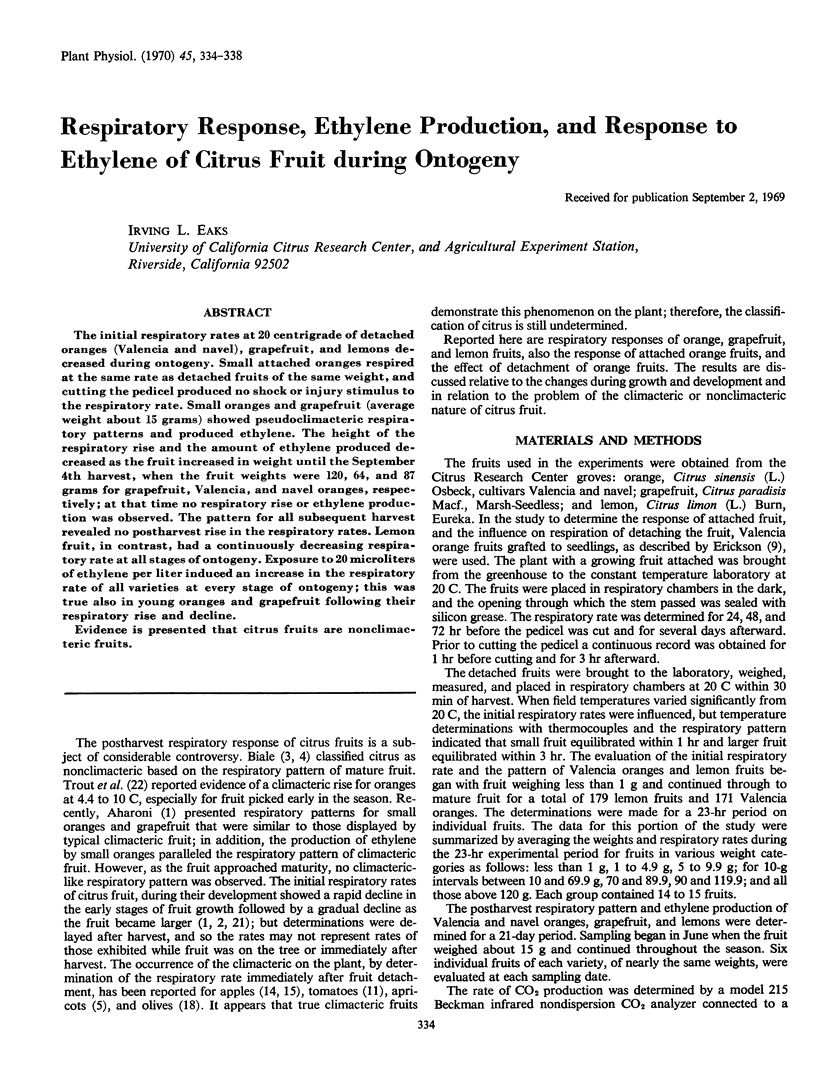
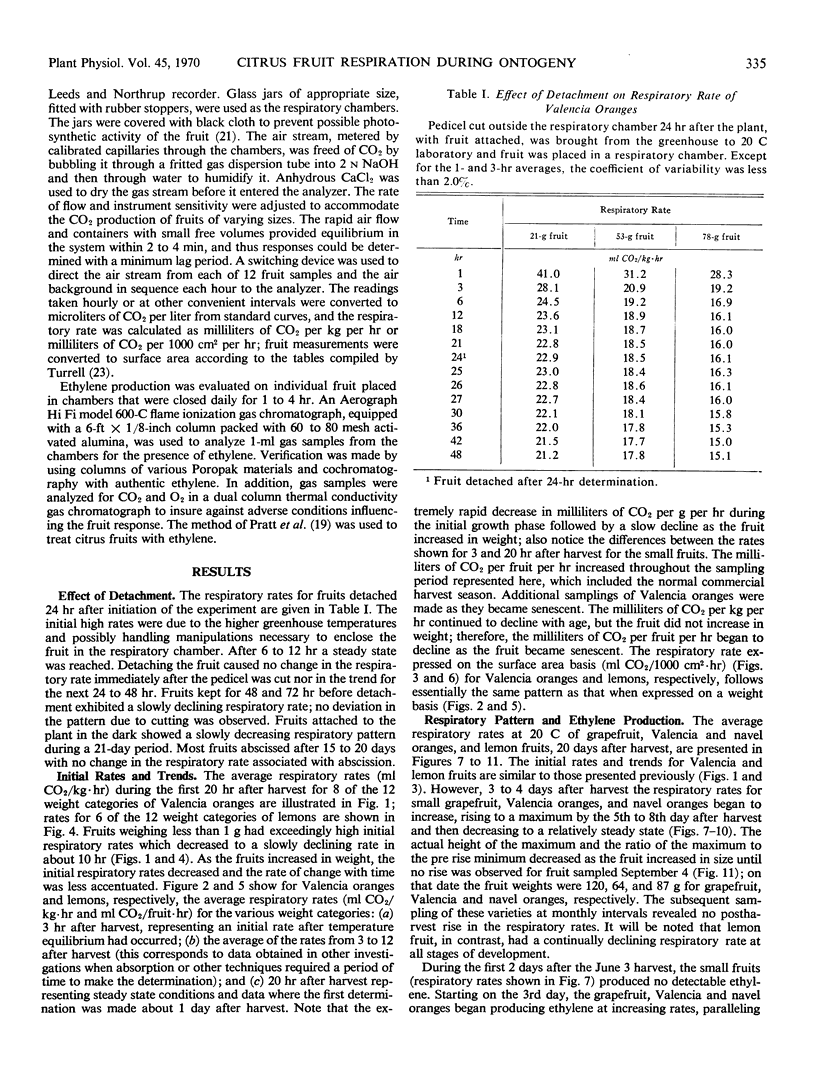
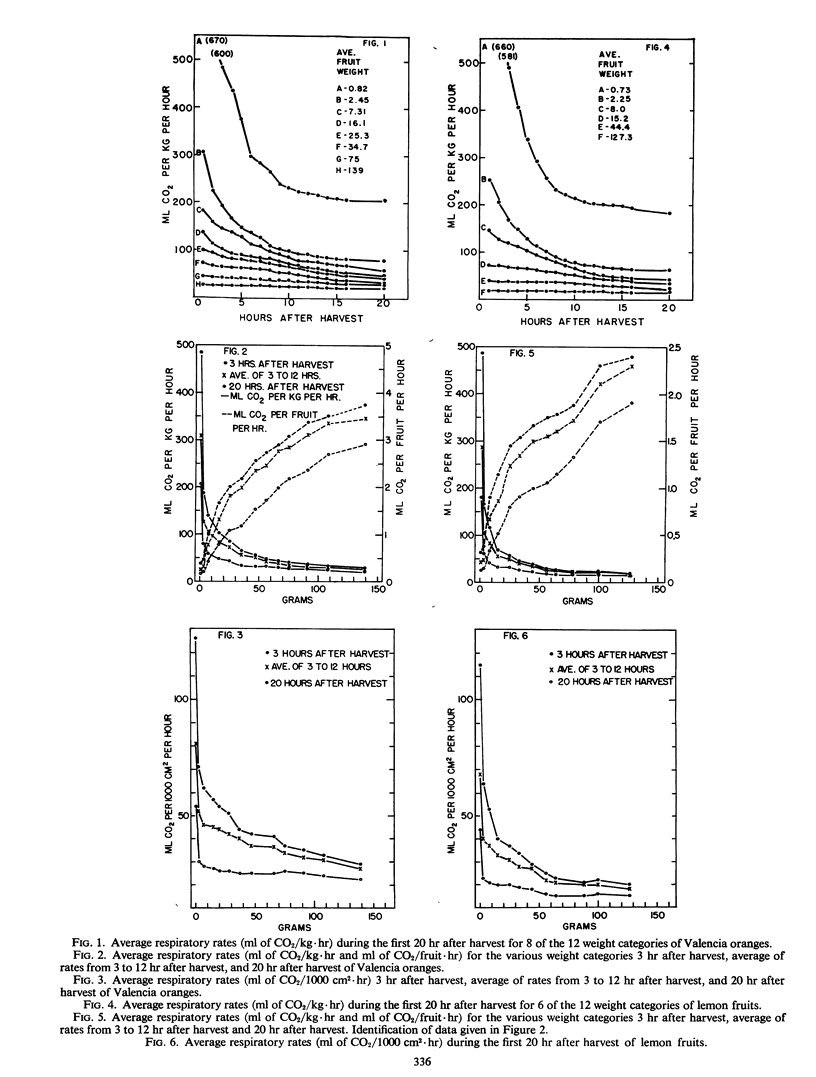
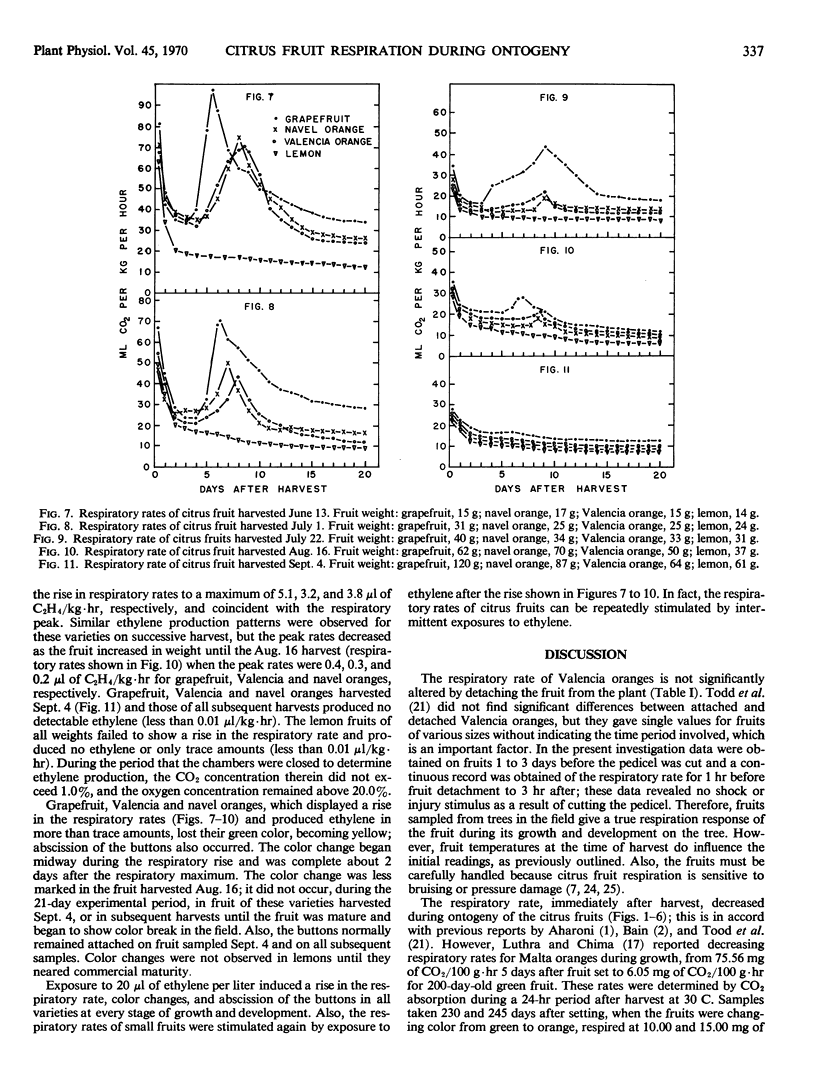
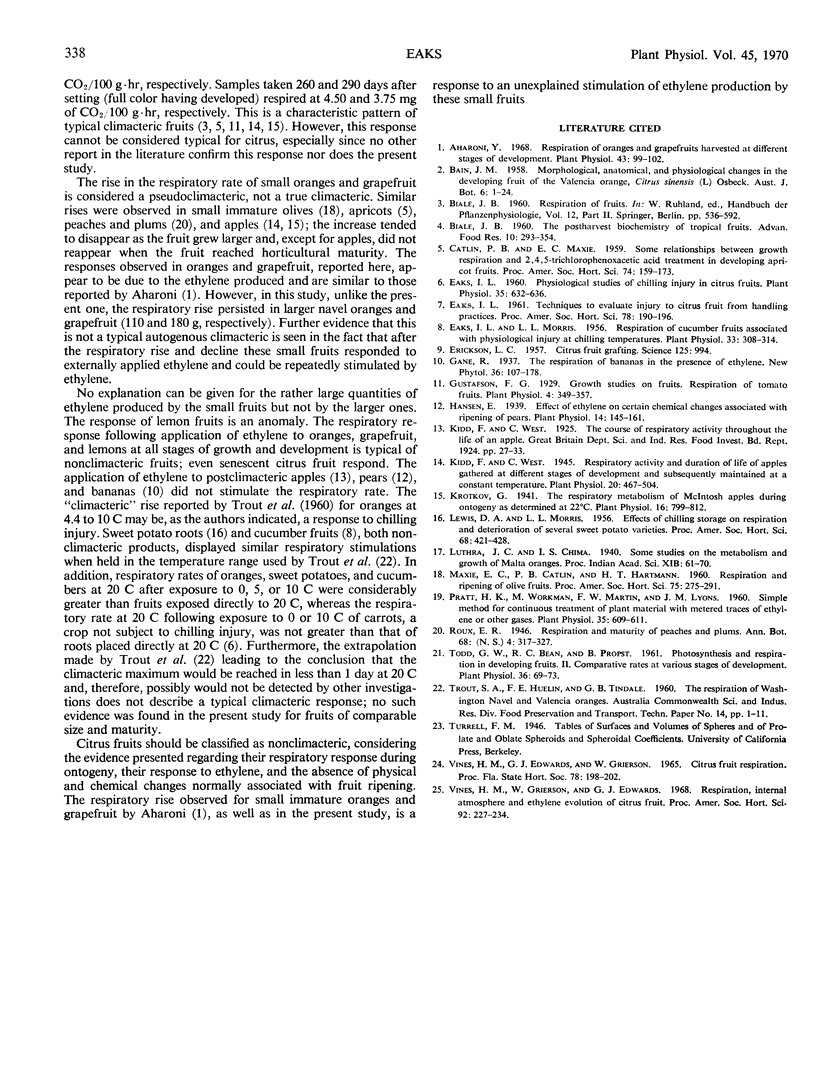
Selected References
These references are in PubMed. This may not be the complete list of references from this article.
- Aharoni Y. Respiration of oranges and grapefruits harvested at different stages of development. Plant Physiol. 1968 Jan;43(1):99–102. doi: 10.1104/pp.43.1.99. [DOI] [PMC free article] [PubMed] [Google Scholar]
- Eaks I. L., Morris L. L. Respiration of Cucumber Fruits Associated with Physiological Injury at Chilling Temperatures. Plant Physiol. 1956 Jul;31(4):308–314. doi: 10.1104/pp.31.4.308. [DOI] [PMC free article] [PubMed] [Google Scholar]
- Eaks I. L. Physiological Studies of Chilling Injury in Citrus Fruits. Plant Physiol. 1960 Sep;35(5):632–636. doi: 10.1104/pp.35.5.632. [DOI] [PMC free article] [PubMed] [Google Scholar]
- Erickson L. C. Citrus Fruit Grafting. Science. 1957 May 17;125(3255):994–994. doi: 10.1126/science.125.3255.994. [DOI] [PubMed] [Google Scholar]
- Gustafson F. G. GROWTH STUDIES ON FRUITS. RESPIRATION OF TOMATO FRUITS. Plant Physiol. 1929 Jul;4(3):349–356. doi: 10.1104/pp.4.3.349. [DOI] [PMC free article] [PubMed] [Google Scholar]
- Hansen E. EFFECT OF ETHYLENE ON CERTAIN CHEMICAL CHANGES ASSOCIATED WITH THE RIPENING OF PEARS. Plant Physiol. 1939 Jan;14(1):145–161. doi: 10.1104/pp.14.1.145. [DOI] [PMC free article] [PubMed] [Google Scholar]
- Kidd F., West C. RESPIRATORY ACTIVITY AND DURATION OF LIFE OF APPLES GATHERED AT DIFFERENT STAGES OF DEVELOPMENT AND SUBSEQUENTLY MAINTAINED AT A CONSTANT TEMPERATURE. Plant Physiol. 1945 Oct;20(4):467–504. doi: 10.1104/pp.20.4.467. [DOI] [PMC free article] [PubMed] [Google Scholar]
- Krotkov G. THE RESPIRATORY METABOLISM OF McINTOSH APPLES DURING ONTOGENY, AS DETERMINED AT 22 degrees C. Plant Physiol. 1941 Oct;16(4):799–812. doi: 10.1104/pp.16.4.799. [DOI] [PMC free article] [PubMed] [Google Scholar]
- Pratt H. K., Workman M., Martin F. W., Lyons J. M. Simple Method for Continuous Treatment of Plant Material with Metered Traces of Ethylene or Other Gases. Plant Physiol. 1960 Sep;35(5):609–611. doi: 10.1104/pp.35.5.609. [DOI] [PMC free article] [PubMed] [Google Scholar]
- Todd G. W., Bean R. C., Propst B. Photosynthesis & respiration in developing fruits . II. Comparative rates at various stages of development. Plant Physiol. 1961 Jan;36(1):69–73. doi: 10.1104/pp.36.1.69. [DOI] [PMC free article] [PubMed] [Google Scholar]


